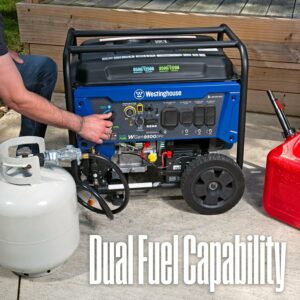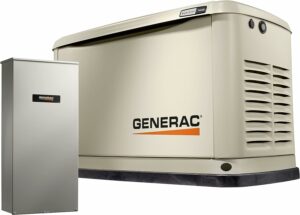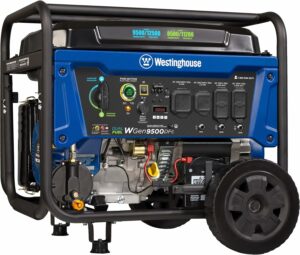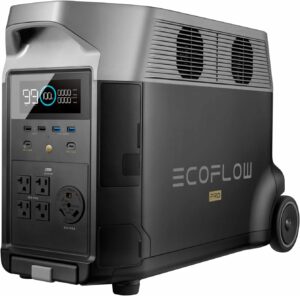How To Properly Disconnect Your Whole House Generator
Introduction
Whole house generators are a valuable asset, providing backup power during outages. However, it is equally important to know how to disconnect your generator once it’s no longer needed safely.
Proper disconnection not only ensures safety but also extends the lifespan of your generator. This guide will walk you through the appropriate disconnecting of your whole house generator.
Provo Green Products embodies a beacon of trust in sustainable discoveries, offering choices that enhance your life and leave a positive mark on our planet.
Leveraging extensive expertise in manufacturing, construction, and various trades, we provide a solid foundation for sustainable living.
Our meticulous research process guarantees that our information about each product is precise and current, allowing you to make informed decisions.
Whether your interest lies in solar products, electric bikes, or other eco-friendly alternatives, our commitment to credibility ensures you have access to dependable insights, guiding your journey toward a more sustainable lifestyle.
Provo Green Products is your go-to destination for finding the right green products for your lifestyle.
Disclosure: As an Amazon Associate, we may earn from qualifying purchases. This does not affect the product pricing whatsoever.
Safety Precautions
Before you begin the process of disconnecting your whole house generator, it’s crucial to prioritize safety. Taking the right precautions can protect you, your property, and others from potential hazards.
Here’s a more detailed look at safety measures to consider:
- Personal Protective Equipment (PPE)
Personal protective equipment (PPE) is your first line of defense when working with electrical equipment.
Make sure you have the following PPE on hand and wear it throughout the disconnection process:
- Safety Glasses: Protect your eyes from debris and sparks that may occur during the disconnection.
- Heavy-Duty Gloves: Insulated gloves designed for electrical work can safeguard your hands from electric shocks and burns.
- Appropriate Clothing: Wear clothing that covers your arms and legs to reduce the risk of injury from contact with hot surfaces or sharp edges.
PPE reduces the risk of injury and ensures you’re well-prepared for any unexpected situations.
- Identifying and Turning Off Fuel Sources
If your whole house generator operates on a fuel source like natural gas, propane, or diesel, it’s essential to take extra precautions related to fuel safety.
Here’s how to manage this aspect:
- Shut Off the Fuel Supply: Before disconnecting the generator, identify the main fuel supply line to the generator. Turn off the fuel supply valve to prevent gas or fuel leaks during disconnection.
- Ventilate the Area: Ensure proper ventilation in the generator area, especially if the generator has been running for an extended period. This helps disperse any accumulated fuel vapors, reducing the risk of ignition.
By addressing fuel-related safety measures, you minimize the risk of gas leaks or fires when disconnecting the generator.
- Electrical Safety Measures
Disconnecting a whole house generator involves working with electrical connections.
To ensure your safety, follow these precautions:
- De-Energize the Generator: Turn off the generator’s power source before you attempt to disconnect any electrical connections. This step prevents electrical shocks or short circuits.
- Inspect Wires and Cables: Inspect any wires or cables for damage before handling them. Frayed or exposed wires should be repaired or replaced to avoid the risk of electrical shock.
- Use Insulated Tools: When disconnecting electrical connections, use tools with insulated handles. This provides an additional layer of safety, reducing the risk of electric shock.
These electrical safety measures will significantly reduce the chances of electrical accidents during the disconnection process.

Steps for Disconnecting Your Generator
Now, let’s walk through each step of the process to ensure a safe and effective disconnection of your whole house generator:
Step 1: Shutting Down the Generator
Before you begin any disconnection process, turning off the generator itself is crucial.
Follow these steps:
- Access the Control Panel: Locate the generator’s control panel or the remote start/stop switch. These are typically found near the generator unit.
- Turn Off the Generator: Gently turn off the generator using the control panel or remote switch. Allow the generator to run for a few minutes without a load to cool down. This helps prevent residual heat and stabilizes the engine before disconnection.
Step 2: Isolating Electrical Connections
You can isolate the electrical connections once the generator is safely turned off.
This step is essential to avoid electrical surges:
- Turn Off Circuit Breakers: Locate the circuit breakers on the generator and turn them off. This step ensures no electrical load on the generator during disconnection.
- Identify and Label Wires: Before disconnecting wires, carefully identify and label them to avoid confusion during reconnection. Take note of which wires go where to make the reinstallation process smoother.
Step 3: Turning Off the Transfer Switch
If your whole house generator is connected to a transfer switch, this step is crucial to ensure that the generator is disconnected correctly from your home’s electrical system:
- Locate the Transfer Switch: Find the transfer switch, typically installed near your main electrical panel.
- Set the Transfer Switch to “OFF”: Ensure the transfer switch is in the “OFF” position. This is the same state it should be in when the generator was initially switched on during a power outage.
Step 4: Properly Ventilating the Generator Area
Safety doesn’t end with electrical disconnection; it extends to maintaining a safe environment around the generator:
- Ventilate the Area: Ensure proper ventilation in the generator area, especially if the generator has been running for an extended period. Allow fresh air to circulate to disperse any remaining exhaust gasses and heat.
By following these steps, you can safely disconnect your whole house generator, ensuring the safety of the equipment and the individuals involved in the process.
Proper labeling and organization during disconnection will make it easier to reconnect the generator when it’s needed again.
Safely Disconnecting Your Whole House Generator
Properly disconnecting your whole house generator is essential to ensure the safety and reliability of your backup power system.
By following these detailed steps, you can confidently and safely disconnect your generator when it’s no longer needed.
Remember that your safety and the safety of others should always be a top priority when working with electrical equipment.
If you need more clarification about any aspect of the disconnection process, consult the manufacturer’s guidelines or seek professional assistance to ensure a safe and effective disconnection.

Maintenance and Storage Tips
Proper maintenance and storage are key to keeping your whole house generator in excellent working condition and ready for action when needed.
Here are detailed maintenance and storage tips to consider:
- Cleaning and Maintenance
Regular cleaning and maintenance are essential to ensure that your generator functions optimally. Follow these steps to keep it in top shape:
- Change the Oil: Regularly change the oil in your generator according to the manufacturer’s recommendations. Clean oil helps maintain engine efficiency and prolongs its lifespan.
- Replace the Air Filter: The air filter should also be replaced at the recommended intervals. A clean air filter ensures proper combustion and prevents engine damage.
- Inspect the Spark Plug: Examine and clean or replace the spark plug as necessary. A well-maintained spark plug improves ignition and overall generator performance.
- Check Fuel Quality: If your generator uses a fuel source, ensure the fuel is clean and of good quality. Stale or contaminated fuel can damage the engine.
- Proper Storage Practices
If you plan to store your generator for an extended period or during seasons when backup power isn’t needed, it’s crucial to keep it correctly to prevent deterioration:
- Select a Dry Location: Store your generator in a dry and sheltered location to protect it from the elements. A dedicated generator shed or garage is an ideal choice.
- Cover and Protect: Use a breathable generator cover to shield the unit from dust, debris, and moisture. Avoid using plastic tarps, which can trap moisture and lead to corrosion.
- Keep the Battery Charged: If your generator has a battery, ensure it remains charged. Some generators have a trickle charger option to maintain battery health during storage.
- Start the Generator Periodically: To prevent the engine from seizing, start your generator periodically (at least every 2-3 months) and let it run briefly. This keeps the engine lubricated and functioning.
- Regular Inspection
Scheduled inspections are essential to identify and address potential issues early on.
Here’s how to conduct routine inspections:
- Inspect Wiring and Connections: Regularly check the generator’s wiring and connections for signs of wear, corrosion, or damage. Repair or replace any faulty components.
- Test the Generator: Periodically test your generator under load to ensure it starts and runs smoothly. This also verifies that the automatic transfer switch, if present, works as intended.
- Fuel System Inspection: If your generator uses fuel, inspect the fuel system for leaks, blockages, or other issues. Address these promptly to prevent fuel-related problems.
Following these maintenance and storage tips, you can keep your whole house generator in excellent condition and ready to provide reliable backup power when needed.
Regular maintenance not only ensures the longevity of your generator but also enhances its performance during power outages.
Maintaining Your Generator for Longevity
Proper maintenance and storage are essential aspects of owning a whole-house generator.
By adhering to a regular maintenance schedule, implementing appropriate storage practices, and conducting routine inspections, you can extend the lifespan of your generator and maintain its readiness for any unexpected power outage.
These steps ensure that your investment in a backup power system remains reliable and efficient for years.

Conclusion
Safety should always be your top priority when dealing with a whole-house generator. Following these detailed safety precautions allows you to disconnect your generator safely and confidently.
Prioritizing safety ensures that you and your property remain protected while maintaining the reliable operation of your generator for future use.
If you have any doubts or concerns about the safety of the disconnection process, please consult the manufacturer’s guidelines or consider seeking professional assistance!
Stay in Touch!
I’am a dedicated entrepreneur with many years of experience and an integrity-driven individual who is highly motivated to succeed. Leveraging extensive expertise in manufacturing, construction, and various trades, we can provide a solid foundation for sustainable living. Our meticulous research process guarantees that our information about each product is precise and current, allowing you to make informed decisions. A deep understanding of business operations empowers me to consistently implement improvements that result in ongoing success. Visit site.


